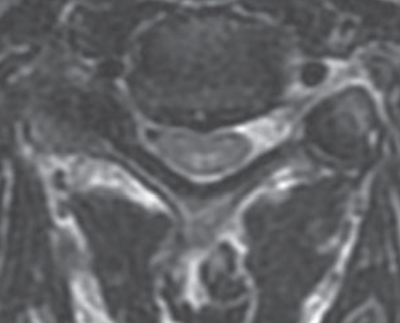47 What is the ASIA classification?1 • ASIA stands for American Spinal Cord Injury Association. • It is a grading system of the severity of spinal cord injury that has been shown to correlate with prognosis. What is involved in obtaining an ASIA rating? • A detailed sensory and motor evaluation of the patient is typically performed using • 10 key motor segments, and • 28 key sensory landmarks. • Each segment is graded separately. Describe the ASIA impairment scale. The ASIA impairment scale is as follows: A. Complete loss of sensory and motor function below the level of the injury B. Incomplete sensory preservation and no motor function present below the level of the injury C. Incomplete motor function, with more than half of the key muscles below the neurological level having a strength of 3 or less on the MRC (Medical Research Council) scale D. Incomplete motor function preservation, with more than half of the key muscle groups below the level of the injury having a grade 3 or more strength on the MRC scale E. Normal motor and sensory function below the level of the injury What are the 10 key muscles tested in the ASIA scale?2,3 1. Elbow flexors 2. Wrist extensors 3. Elbow extensors 4. Finger flexors 5. Finger abductors 6. Hip flexors 7. Knee extensors 8. Ankle dorsi flexors 9. Long toe extensors 10. Ankle plantar flexors What was the key parameter looked at in the National Spinal Cord Injury Study (NASCIS)?4 Long-term functional outcome in acute spinal cord injury (ASCI) patients treated with high doses of methylprednisolone sodium succinate What was the conclusion of this study? The initial study reports improved long-term functional outcome in ASCI patients treated with high-dose methylprednisolone. What has more recent research data shown on this same topic? There is newer evidence based on randomized control trials that shows no significant benefit to the use of methylprednisolone in acute spinal cord injury. In fact, reportedly there has been an increased risk of adverse events related to high-dose methylprednisolone administration in these ACSI patients. What is central cord syndrome?5,6 It is an incomplete spinal cord injury affecting the center part of the cord. What is the clinical presentation of central cord syndrome?7 • Disproportionate greater motor deficits in the upper extremities as compared with the lower • Sensory deficits below the level of the lesion • Signs of myelopathy What injury typically causes central cord syndrome? A hyperextension injury What abnormalities of the cervical spine can contribute to the occurrence of central cord syndrome? Cervical stenosis or presence of underlying osteophytes and spondylosis What patient population is typically affected? Elderly patients with arthritis How is central cord syndrome evaluated radiographically?8,9 • MRI of the cervical spine is the mainstay of diagnosis, revealing significant cervical stenosis in the setting of hypertrophy ligamentum flavum or anterior cervical osteophytes impinging upon the cord. • A cord signal may also be see in the presence of bulging or herniated cervical disks, which may also contribute to the pathology. Fig. 47.1 Axial T2-weighted MRI of the cervical spine demonstrating a cord signal at C3–4, within the center of the gray matter of the cord, with associated disk herniation in a patient with central cord syndrome and myelopathy. What other imaging modalities may be used? Cervical spine x-rays as well as a CT scan to assess the bony anatomy and the presence of ossified posterior longitudinal ligament What is the natural history of central cord syndrome upon initial presentation? Initially there may be a phase improvement, whereby there is recovery in motor function more so in the lower extremities as compared with the upper extremities typically. This occurs over the course of the first week after the injury. What is the typical subsequent clinical progression and central cord syndrome? Often there are some residual deficits. It is subsequently important to assess the residual neurological exam as well as the need for further intervention.
Spinal Cord Trauma
47.1 ASIA Classification
47.2 National Spinal Cord Injury Study
47.3 Central Cord Syndrome

Stay updated, free articles. Join our Telegram channel

Full access? Get Clinical Tree






